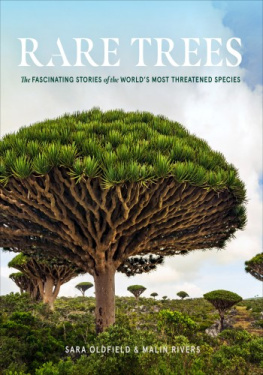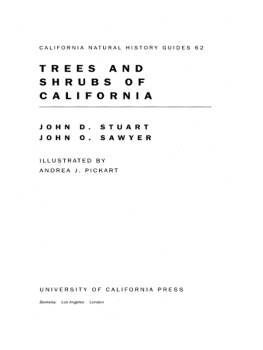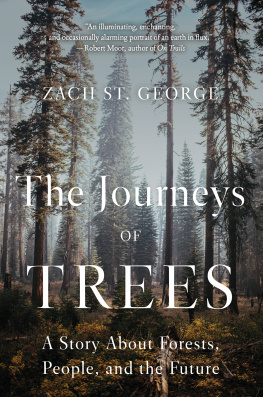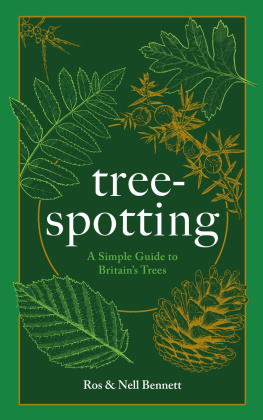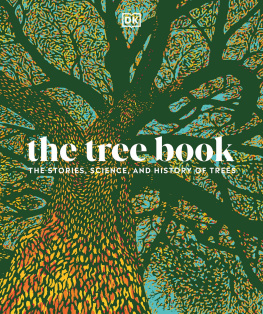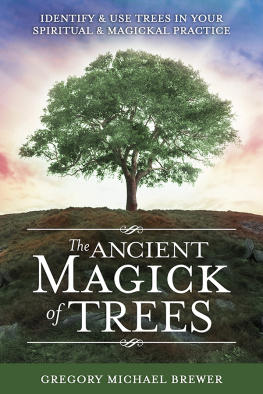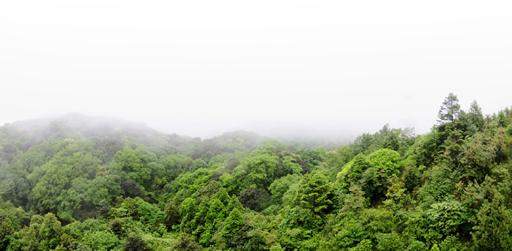
RARE TREES
TheFASCINATING STORIESof the
WORLDS MOST THREATENED SPECIES
SARA OLDFIELD & MALIN RIVERS
with contributions byADRIAN NEWTON & PETER WILKIE

TIMBER PRESS PORTLAND, OREGON
Contents
CHAPTER 1
Trees and Their Ecosystems
CHAPTER 2
Trees and Their Uses
CHAPTER 3
Special Tree Groups
Introduction
Taxonomy gives species their names; conservation assessments give them a voice.
PETER WILKIE, Royal Botanic Garden Edinburgh
Walking through the woods on a spring day, sheltering under a tree for shade or cover in a summer rainstorm, enjoying the shifting autumn colours, decorating a Yule tree at winter solsticetrees are part of our lives throughout the year. Through time, trees have been of immense importance, building civilisations and shaping our world. Even in the increasingly urbanised global society, trees are essential for our survival. They play a vital role in ecological functioning, helping in a major way to regulate atmospheric oxygen and store carbon, offsetting carbon emissions from fossil fuels, stabilising soils, and controlling water flow. As major components of the forest ecosystems that cover nearly one-third of the worlds land surface, trees provide habitat for over 50 percent of terrestrial biodiversity, including 75 percent of birds and 68 percent of mammals. Trees provide us with vital resources for daily life. Timber, fruits, nuts, spices, perfumes, waxes, fuel, fibres, and medicine are just a few of the products we rely on that are provided by trees. And, as well, trees provide colour, shape, shade, mythology, and a sense of place in our landscapes and gardens. This book celebrates the global diversity of trees. It shows the threats now leading to extinction of trees around the world, as we collectively take these species for granted, and highlights the actions that are being taken to conserve the trees in most serious trouble.
Did you know?
The Global Trees Campaign supports tree conservation in over 50 countries, implementing conservation projects for over 400 threatened tree species.
Trees dominate forest landscapes worldwide. In total, there are over 58,000 tree species around the world. The huge diversity of trees results from evolutionary forces and adaptions to local climatic and soil conditions. Different forest types are found across the planet, from the vast expanse of boreal coniferous forests, through mixed temperate forests, to tropical rainforests. Trees first evolved over 300 million years ago with relatives of conifers and cycads being the earliest trees that we would recognise today. Although conifers and cycads are the oldest tree lineages, the characteristic of woodiness subsequently evolved in many plant families with the arrival of flowering plants in the Cretaceous period, 130 million years ago. Magnolias are among the oldest flowering plants. Trees continue to evolve, and new species are still being discovered and described. The extremely long history of trees and their evolution and survival over millennia provides a backdrop to the current dramatic loss of tree species globally.
EVOLUTIONARY HISTORY AND SHIFTING INFLUENCES
Over evolutionary history, some tree species became extinct through natural causes. Others proved remarkably resilient, with fossil records showing how species survived changing climates over millions of years. But the pace of extinction is now of a different order of magnitude. Extending back into prehistory, humans have exerted an influence on trees and the natural environment, initially causing very slow and gradual changes at the local level. But the pace of environmental change accelerated in the early 19th century, at the start of the industrial revolution and at the time when the human population passed one billion. With European colonisation and expanding international trade, environmental change spread rapidly around the world, with particularly significant loss of forests in the species-rich tropics. The impact of humanity on the biosphere is now considered so great that we have entered a new geological era in the history of the planet, known as the Anthropocene. With the destruction of forests, the rise of pollution, and the impact of carbon emissions, humankind itself has become a global geological force. The consequences for the earths future are unprecedented.
We know that we are pushing more and more species to the brink of extinction without really understanding the consequences. There may be a domino effect as ecosystems begin to unravel. In the process, an unimaginable amount of natural resources and genetic material that has scarcely been studied is being lost. Globally, the main threat to tree species is habitat destruction. The main reason for clearing forests has been to provide more land for agriculture to feed the growing human population and meet growing global expectations for cheap meat, soya products (used mainly for animal feed), and new crops (such as avocados). In the tropics, slash-and-burn farming has been a major cause of forest degradation and deforestation, but far more damaging now is plantation development. In addition to clearance for agriculture, the spread of towns and cities, transport systems, mining, and industry have all resulted in deforestation, threatening tree species on a global scale.

Fieldwork in Indonesia.
Logging too has been a major threat to tree species. Timber for local use and international trade is still extensively sourced from natural forests rather than plantations. Many selectively logged tree species with desirable wood qualities are threatened with extinction, and other trees are affected by clear-felling (clear-cutting). Trees are also harvested from the wild for various other products and may face the threat of overexploitation. Medicinal products are derived from a wide range of tree species and are of great importance in many rural parts of the world.
Forest clearance for agriculture and logging takes place at different rates and scales around the world. Added to these threats is the overarching global challenge of climate change. The impact of climate change due to the increase in CO 2 emissions during the 20th century is an increasing threat to tree species and one that we are only starting to understand. In addition to emissions from burning fossil fuels, global deforestation has been one of the main drivers of climate change with the release of the carbon stored in trees as CO 2 emissions. In turn, the impact of climate change on individual plant species is complex. As trees tend to be long-lived we are only now beginning to see the impacts and assess the threats. On every continent we are experiencing more extreme tropical storms and hurricanesweather events that can have severe impacts on tree species. We are witnessing more frequent and intense forest fires that threaten the survival of rare trees. Pollination and dispersal patterns of trees shift as flowering and fruiting times change, perhaps no longer coinciding with the presence of the appropriate insects and birds.
Next page
